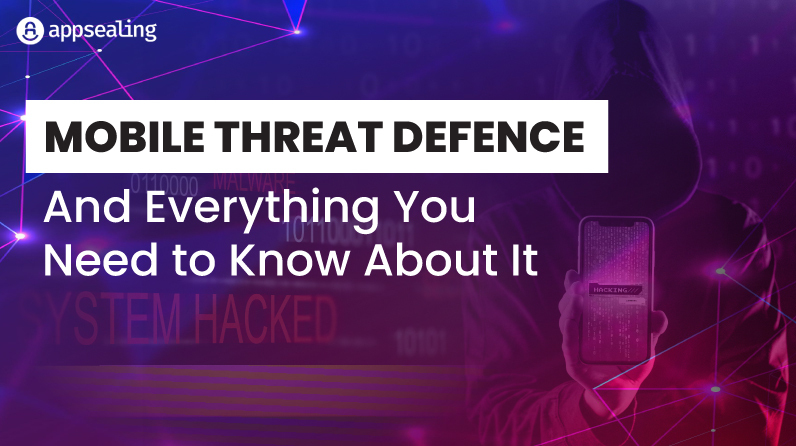Smart devices contribute to the industry as a major asset, this is especially due to the level of connectivity between devices in the digitally connected society of today. However, collective network greater security akin to the amplification of cyber-attacks is a possible outcome, too. Due to their omnipresent nature and information most often being highly sensitive, mobile phones can be a security feasibility to which hackers pay most of their attention. Hence, securing mobile networks by implementing robust cybersecurity solutions against mobile threat defense has come to be the pillar of the cyber defense arsenal of companies against cyber threats.
The moving battlefield is a real challenge to mobile threat security and the knowledge of how things are changing is a critical point and need to be straightforward about the fact of growing and multifarious mobile device cyber threats which contain malware, spyware, ransomware, and phishing to mention a few first of all. Events that can wreak havoc like cyber-attacks, phishing, and malware are the sources that leave businesses with a loss of data confidentiality, which leads to operational disruption of the business.
The malware plague on Mobile Devices is also growing:
The mobile market is haunted by malware, a serious threat, that typically comes in the disguise of a hacked website, dangerous applications, and malicious email attachments. Through malicious software (malware), it can take over as an eavesdropper, take control of a user’s device, and remotely steal data once it is installed. Financial trojans appeared as a new source of malware in the last few years and started targeting both personal and corporate users increasing its volume due to an increase in the number of mobile banking and payment applications.
Solutions for Mobile Threat defense Detailed explanation:
A collection of security tools called mobile-threat defense (MTD) solutions is intended to identify, neutralize, and stop attacks that aim at mobile devices. These solutions find suspicious activity and abnormalities suggestive of malevolent behaviour by applying sophisticated algorithms, machine learning, and behavioural analysis. Important parts of MTD solutions consist of:
App Security: With the abundance of mobile apps, app security is essential to stopping dangerous malware from infecting devices. App reputation services are utilized by MTD solutions to evaluate the reliability of downloaded applications, identify potentially hazardous ones, and implement app whitelisting or blacklisting guidelines.
Network Security: Protecting sensitive data sent between devices and servers requires network connections to be secured. To stop data exfiltration and man-in-the-middle attacks, MTD solutions use network-based threat detection methods to spot strange traffic patterns, illegal access attempts, and malicious URLs.
Due to their smaller screens and users’ propensity to interact with emails and messages while on the go, mobile devices are especially vulnerable to phishing assaults. Phishing attack risk is reduced by MTD solutions by:
Email security: MTD systems work in tandem with email providers to examine incoming correspondence for indications of phishing attempts, such as dubious attachments, links, and forged sender addresses. These technologies enable people to take caution when engaging with unknown or unexpected communications by identifying potentially harmful emails and alerting users to them.
SMS/MMS security: MTD solutions provide security not just for email but also for SMS (Short Message Service) and MMS (Multimedia Messaging Service) communications, where phishing attempts can also happen. These solutions shield users from SMS/MMS-based phishing schemes by analyzing text and multimedia material for malicious URLs and phishing signs.
Preventing Insider Dangers:
Though they sometimes get less attention than external dangers, insider threats may nevertheless be quite dangerous for enterprises. Insider crimes, whether deliberate or unintentional, can jeopardize confidential data and jeopardize organizational security. Examples include illegal data access, device theft, and carelessness. Insider dangers are countered by MTD solutions through:
Use of User Behaviour Analytics: MTD solutions make use of user behaviour analytics to track and examine user activity on mobile devices, spotting departures from typical patterns of behaviour that can point to insider threats.
Data Loss Prevention (DLP): Companies may put rules forbidding the manipulation of the loosened data across mobile devices in MTD solutions that are enriched with the DLP functionality. These security options cease the revelation of private details of the company by insiders without required authorization by encryption data, defining access made restrictions and watchful data flow both internally and externally to the company network.
Stipulating the Regulations and Guidelines:
The provision of mobile-threat defense systems is crucial in ensuring compliance with regulations related to data breaches and continuous protection from both external and internal sabotage agents. Companies should take strong security measures to ensure the security of customer information; this is supported by regulations which govern how PII data is collected, stored, and processed. MTD solutions help businesses comply by MTD solutions help businesses comply by:
Data Encryption: MDT tools utilize encryption technology, which helps to protect data transmitted across networks and stored on mobile units, thus preserving personal data, and guaranteeing the privacy and security of sensitive data. These offerings enable enterprises to uphold compliance with industry benchmarks and laws that involve encryption though always by encrypting data-in-transit and even data-at-rest.
Audit Trails and Reporting: Business accountability is one of the main MTD features because it enables companies to trace and register any security events, user activity, and policy breaches. These systems will equally render return confirmation, complete audit trails, and reporting facilities. These solutions not only assist with regulatory audits but also help enforcement of data protection laws. They do this by producing complete reports on the security incidents and how compliant you are with the law.
Conclusion:
The protection of data, assets, and reputation of businesses is what should be the primary concern. This issue becomes even more vexing due to the abundance as well as the continuous evolution of cyber threats. Organizations may use MTD solutions that employ both reactive threat detection technology and advanced security architecture which lowers the risks associated with cyber fraud and keeps mobile computing secure. Leading towards a digitized and interconnected globe, the willingness to adopt robust mobile threat protection, for ensuring business continuity and acquiring trust with customers and shareholders is a vital strategic asset. Although it is not only about compliance and doing things right, it is a requirement to ensure success. Get more knowledge about data protection only on appsealing.











